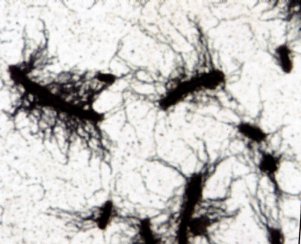| An old star-treky like me stands in awe when I ponder the world of microbiology. The humanbody has some 10**13 (i.e., 10 million times 1 million) cells, a number pretty hard to comprehend. Within our bodies, however, are 10 times as many bacteria. Many of these bacteria are those we have evolved alongside, and some provide benefits to our bodily functions (if you don't buy this, just take a good regimen of potent antibiotic, and see what happens to your digestive track). Although the mammalian gut is packed with microorganisms, inflammatory responses are rare, again because we evolved in tandem with many of these microorganisms.  In, on and everywhere around us, too small to see is a separate universe, that we explore with microscope and DNA sequencers rather than warp engines. Bacteria, fungi, viruses, protozoa are as abundant as they are ubiquitous on earth, and on balance, life as we know it is highly dependent on their functions. For example they produce some 1/2 of the Earth's atmosphere, and form the foundation of the critical food chain. Symbiosis with higher animals abounds. Our bodies contain 10**14 bacteria, many species, and all of these undergo at rapid rate, natural selection. Their relatively simple genomes enable fast replication, and thus fast adaptation to environmental threats, such as the threat of man-made antibiotics. In fact, these microscopic organisms dating to almost 4 billion years ago, prepared the early genomic templates that led to all other life on Earth - perhaps they are, the final frontier. It is hard to be interested in life and evolution, and ignore the little bacteria. I call your attention to a special issue of Science Magazine, titled "Ecology and Evolution of Infection" dated May 11, 2001 (most libraries have this prestigious journal). Science has also compiled a web supplement and provides links to related web information. | ||||||
|
Fossil
Museum Navigation:
Home Geological Time Paleobiology Geological History Tree of Life Fossil Sites Fossils Evolution Fossil Record Museum Fossils |
